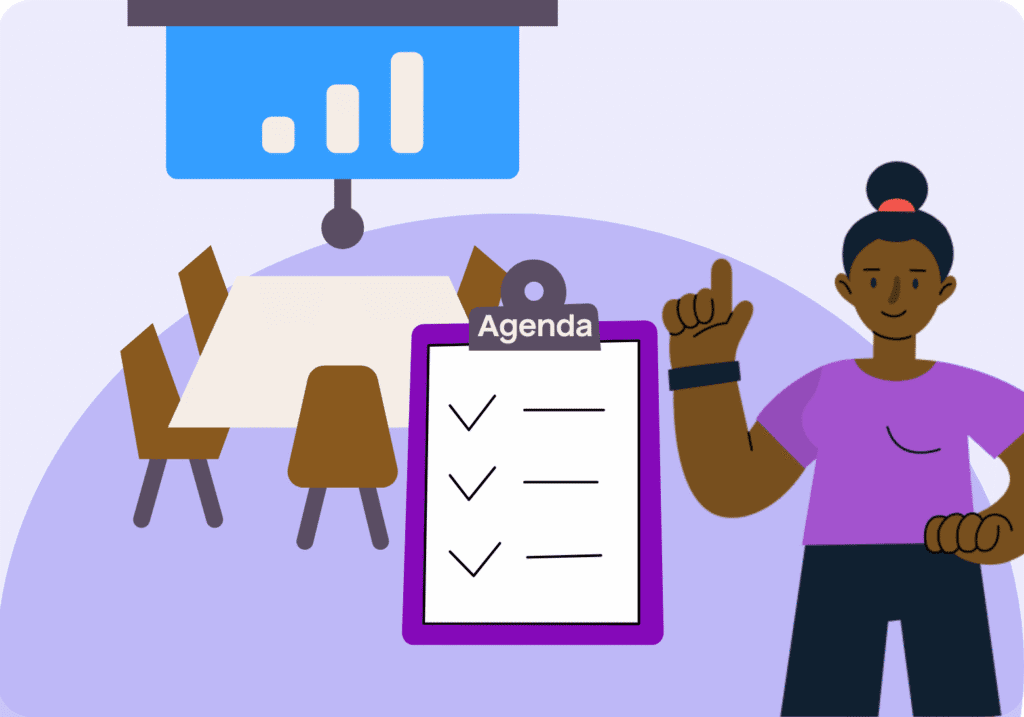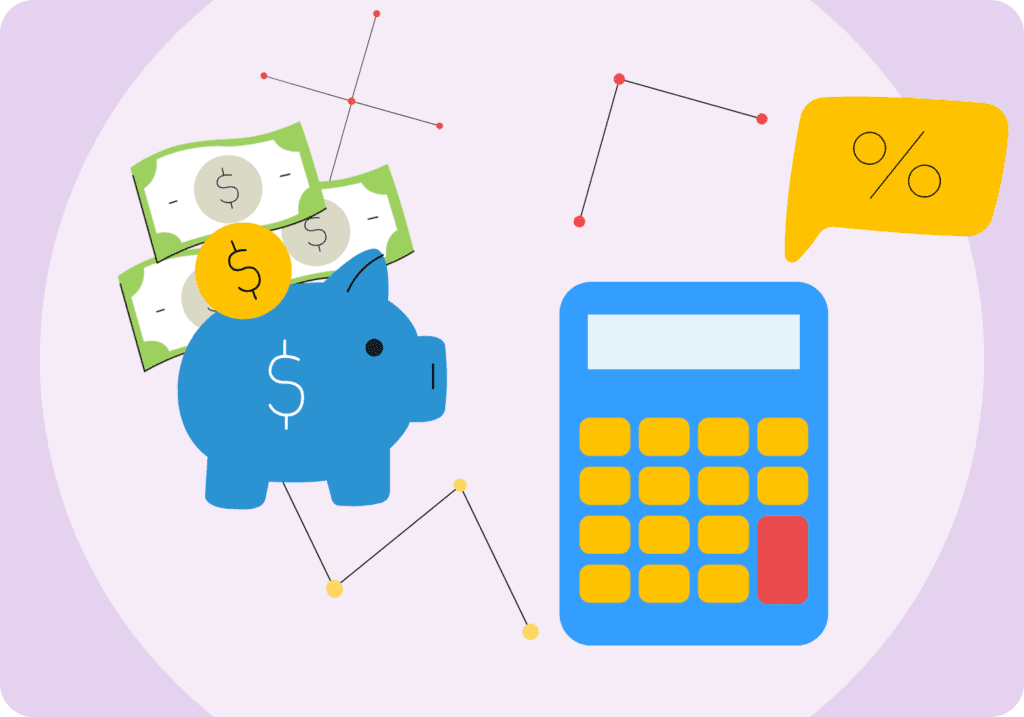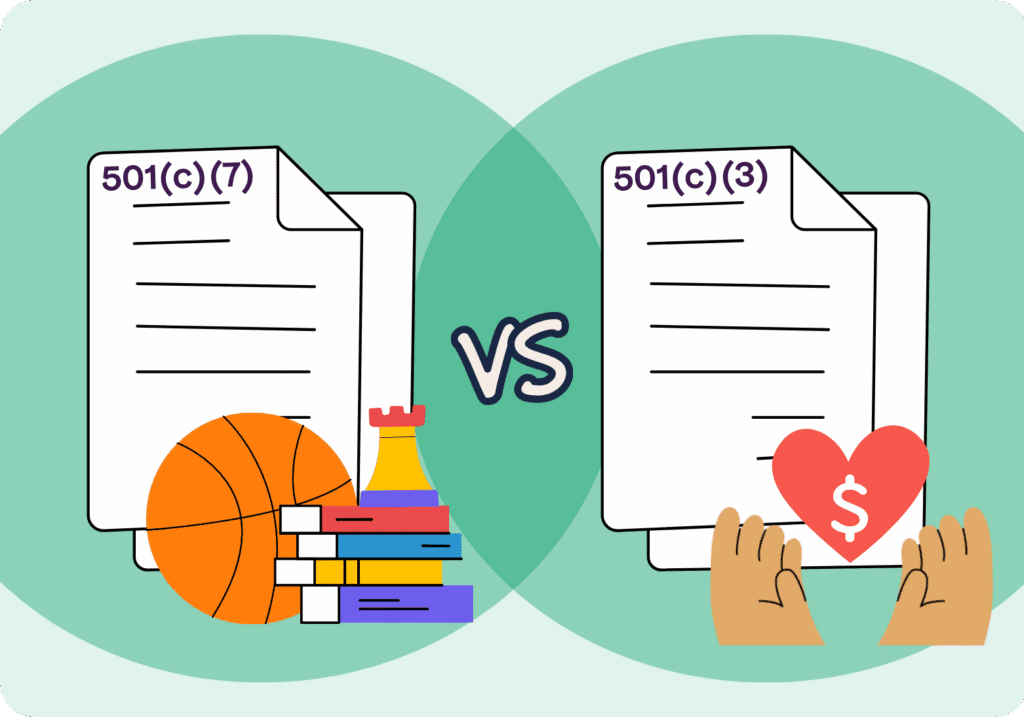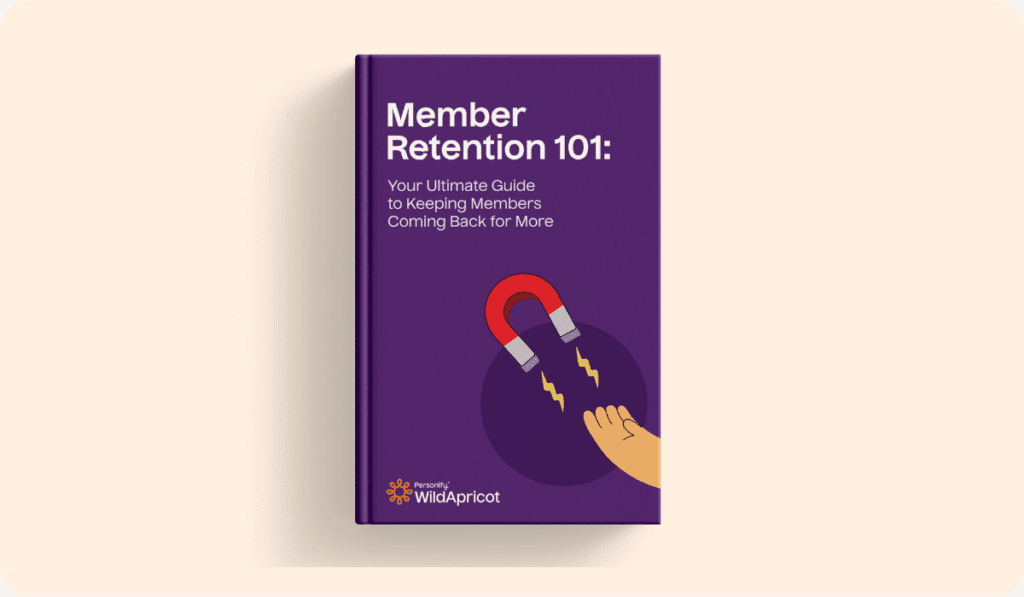Have you ever walked out of a board meeting that took over two hours and thought to yourself – this could have been an email? Perhaps your meetings have been derailed, going over the time limit and ultimately failing to achieve the meeting goals. Don’t worry, you’re not alone.
Board meetings are incredibly important for the success of any nonprofit, but how can you optimize the time together and stay focused on the meeting objectives?
Answer: the all powerful board meeting agenda
Why are board meeting agendas so important?
There’s no feeling more stressful than having to wing it during an important meeting! Coming in with a clear and efficient agenda spares you that stress and helps you:
- Set clear expectations with the other board officers
- Provide a roadmap for each agenda item
- Cross things off the vital to-do list
- Fulfill your legal obligations as an organization
- Increase accountability amongst other board members
- Acts as a record and follow-up tool for the next meeting
A board meeting involves a whole group of people from diverse backgrounds and perspectives. Being prepared assures that everyone’s voices will be heard. After all, you want your board of directors to be able to use their unique skills to the best of their ability!
4 Simple Steps to Write an Effective Board Meeting Agenda
Writing effective board meeting agendas isn’t as overwhelming as you might think. Let’s break down the process into four simple steps!
1. The Who: Decide the Agenda Writer
Typically, a meeting agenda is collaboratively written by the board chairpersonand the board secretary.
The board chair is responsible for setting the board’s priorities, and the board secretary is in charge of administration and record-keeping. Together, these two members can make a comprehensive agenda that clearly hits all the key points!
2. The What: Include these 8 Core Agenda Items
An important step in running an efficient board meeting is knowing which discussion items should be on the agenda. You don’t want to clutter the agenda, but you don’t want to miss anything essential either!
A typical board meeting agenda format goes something like this:
Welcome and Call to Order
Your board meeting should always kick off with a call to order! After your chairperson welcomes everyone to the meeting, they note the date, time and location of the meeting. This will be documented by the secretary in the board meeting minutes.
Read more: How to Write Effective Meeting Minutes (with Templates and Samples)
After this, the board chairperson lays out the mission and vision statements for your nonprofit. This reminds the board of their long-term goals for the organization.
The welcome and call to order is also an opportunity to share the purpose of the meeting. Is it a typical quarterly board meeting, or has it been called for a special reason? If this is your first board of directors meeting, or if there is a new board member, this is also a great time to make introductions!
Read more: Nonprofit Board Positions: Everything You Need to Know!
Changes to the Agenda
Check in with other members—does anything on the agenda need to be shifted? Is there anything new to add, or something that’s been resolved since the agenda went out? These changes make all the difference in running a smooth meeting.
Approval of Previous Minutes
At the end of every board meeting, a copy of the previous meeting minutes will be sent out to the board of directors. This gives them a chance to make sure all the information is documented accurately and to their satisfaction. In case board members haven’t had a chance to raise any concerns since the last meeting, this is their opportunity.
Board meeting minutes are an essential legal document to have in your organization’s records, so the approval of minutes should always be on the agenda. Plus this is vital for holding board members accountable!
Reports
Different organizations rely on all sorts of different board reports, so this section can be flexible according to your needs. Generally, the executive director is the first to present any relevant reports and provide the routine updates of the organization. They’ll share the progress of any annual goals and potential opportunities.
After this, there’s almost always a financial report presentation. During this time, the finance director will give their financial review – i.e. budgets compared to actuals, and any changes of signature authority on bank documents are approved through a motion. This usually happens when there’s a change of officer.
Financial reports give board members a look at the financial performance of the nonprofit before they start implementing new goals and ideas.
Finally, the reports section will share any committee reports. This can be any updates from fundraising to public relations. This area is pretty flexible, so share what makes sense for your organization’s specific needs.
Old Business
Old business covers any issues that are currently unresolved, or conversations that were unfinished in the last board meeting. This lets the board look at how these issues have progressed, which informs how they might want to see them resolved. This will allow time for discussion so that critical items aren’t dropped. You can expect some voting to go on at this point as people decide how they want to move forward!
If issues still feel unresolved, this is also an opportunity to pass them onto relevant committees.
New Business
This is where the brainstorming comes into play! What are your board members hoping to achieve moving forward? What hopes and visions do they have for the organization? New business is where your board can collaborate, having productive discussions on how to execute new ideas.
You can expect LOTS of discussion and debate in new business, so leave ample time for this item! Be sure to hold space for votes on how people would like to proceed.
During this voting process, decisions for new business can include:
- Going ahead with the plan
- Making changes to the plan before proceeding
- Tabling the plan altogether
- Delaying action for now
- Passing things to the committee
Because new business often takes some consideration, it’s a best practice to set a future date to discuss further. Today’s new business will be the next meeting’s old business!
Announcements
Announcements are a place to keep everyone in the loop about things they should know but don’t necessarily need to act on just yet. Think of this as the routine business of your organization.
This could include:
- New projects and updates
- Anniversaries
- Shout-outs and congratulations
- Condolences
Announcements are also an opportunity to suggest any additional items for the next meeting’s agenda.
Closing or Adjournment
Once everything is done, the board chairperson thanks everyone for joining the meeting and formally announces that it’s come to an end. The secretary records the official time of adjournment in the minutes. Along with this, the date of the next meeting is set.
3. The Where: Prepare and Format Your Board Meeting Agenda
While your board meeting agenda is an official document, it doesn’t have to be boring! If you’re the creative type, add a splash of color, or include your organization’s branding on the document. Just be sure that there’s a logical flow to how information is organized.
You can format your agenda with a simple Google Doc, or you can work with more comprehensive board or project management software. Go with whatever feels most natural to your flow of work—an agenda is meant to make things easier, not harder!
Also, while it’s good to have a somewhat consistent structure to your meetings, don’t be afraid to shake it up if there’s an urgent issue at hand. For example, if a board member is absent because of a health issue, redistributing their responsibilities might trump sharing reports.
TIP: Include a time estimate for each item! Some things will take 5 minutes, others will take 30. Setting expectations early will keep your meeting moving along.
4. The When: Distribute Your Agenda to Board Members in Advance
Remember what we said about being prepared? Your agenda will be most useful to your board if it’s provided in advance. Send it out by email, and then ping everyone right before the meeting as one more reminder to read it over.
Also, be sure that every member knows what they’re responsible for during the meeting. You don’t want to catch anyone off guard when the time comes for them to share!
Board Meeting Minutes: Mastering Them for More Efficient Meetings
As your board of directors goes through the agenda, your secretary will document the details of the meeting in their board meeting minutes. This information is useful in case anyone has missed the meeting—but it also serves as an official legal document!
Minutes go far beyond a simple statement that the board held a meeting. They also include:
- The start and end times of the meeting
- Who was present and absent
- The outcome of votes
- Future steps to be taken
- The progress of action items
After the meeting is over, minutes are always shared with the board of directors. Because this is an official record, it’s vital that board members are in agreement of what was documented.
Totally Free, Simple Board Meeting Agenda Templates
The board meeting agenda format will be slightly different depending on the needs of each organization! If you’re looking for something specific, we’ve provided you with 5 sample board meeting templates to check out.
Nonprofit Board Meeting Agenda Template
If you just want to get an idea of what most nonprofit board meeting templates should include, we’ve got you covered. Here’s a basic look!
Church Board Meeting Agenda Template
A church board meeting agenda template helps meet the needs of church boards—or those of any other religious organization! As you can see in our example, time for prayer is included.
HOA Board Meeting Agenda Template
Homeowners Associations also have a slightly different agenda. Time for an open form has to be included, so you can expect them to go a little longer. Here is our example board meeting agenda for an HOA!
Annual Board Meeting Agenda Template
Annual board meetings work differently than monthly or quarterly ones. Often, they need to include time for the election of new officers. This sample should have you covered.
First Nonprofit Board Meeting Agenda Template
Your first board meeting is going to have different needs than your regular one! How you start out sets the stage for what comes next, so make sure you have a strong agenda to prepare you.
3 Sample Meeting Agendas to Inspire Your Next Board Gathering
If you’re looking for a sample of board meeting agenda layouts from similar organizations to yours, we have a few examples for you!
National Council of Nonprofits
This example from the National Council of Nonprofits compares traditional and strategic board meeting agendas. You can see the differences side-by-side! This is a great example of how you can shift your meeting structure depending on your current needs.

YMCA
The YMCA’s sample board meeting agenda is simple and clean, and even includes time suggestions for each item. If you’re uncertain about how long each item should take, try working with this setup to start. You can always adjust as you need to!

San Diego Miramar College
This sample committee meeting agenda from San Diego Miramar College offers a table format to showcase how the “old business” and “new business” items align with the organization’s goals. This is a great way to ensure each item of business brought up during board meetings aligns with your overall goals.

Software That Can Simplify Board Meetings
Looking to simplify your board meetings? Here are some of our favorite board software options!
Boardable
Trusted by thousands of organizations around the globe, Boardable’s platform is optimized for virtual collaboration in a single screen. Get a full board management experience at a fair and flexible price—no surprise add-on costs.
Zeck
Zeck is reimagining the way board decks, board prep and board governance (the bane of all of our work experiences) are approached. Simple to use, cool and secure—Zeck is the first ever board site.
Diligent Boards
Diligent is the leading board management, governance, risk and compliance (GRC) SaaS provider, serving 83% of ASX 200 and 25,000 organizations around the globe. It also comes with a free trial!
BoardTrac
Boardtrac Plus is a digital meeting solution that intuitively caters to the needs of Boards as well as providing an innovative meeting solution for any organization.
Govenda
Governance is changing rapidly, and Govenda is the board success platform to help accelerate your boards’ transition to stakeholder governance and a deeper connection to the bench strength of your organization, shareholders and stakeholders broadly.
Comes with a free trial!
BoardPro
BoardPro is a board portal for more productive board meetings and smarter decisions. Their affordable and easy-to-use board software helps SMEs and Nonprofits streamline their entire board process, increasing efficiency and lifting performance.
Starting at $150/month. Up to 40% discount on plans for Nonprofits.
OnBoard
The OnBoard board intelligence platform transforms complicated processes so boards can focus on what matters: Realizing their vision for the organization. It includes a system of record for directors, executives, and administrators, and cross-device data and analytics.
Comes with a free 60-day trial!
BoardEffect
BoardEffect is a board management platform optimized for nonprofit, community healthcare, higher education & credit union organizations. Comes with a free demo!
Boardworks
Boardworks is a board management tool that provides users with surveys, voting, e-signatures, data migration and more. Designed for businesses of all sizes in entertainment, finance, utilities and other industries.
Parabol
Parabol is a Free Agile Meeting Tool for Remote Teams, supporting Retrospectives, Sprint Poker meetings and more. It seamlessly integrates with Atlassian Jira, GitHub, & Slack and it’s free & open-source.
Boardvantage
Nasdaq Boardvantage® helps boards and leadership teams optimize the entire workflow of meetings. Help save time on preparation, engage with confidence, and enhance strategic decision-making—all with award-winning 24/7/365 support!
Comes with a free trial!
No budget? No problem.
Here are ten more software options that don’t come with a price tag!
Google Docs
Google Docs is a web-based app designed to store, create and edit spreadsheets and documents online. Designed for businesses of all sizes, it is a cloud-based document management system that helps teams collaborate, share, edit, chat and comment across multiple files in real-time.
Trello
From sales and marketing to HR and operations, teams can design and customize Trello to fit their unique needs and work styles. And with over 100+ integrations with other key tools like Google Drive, Slack, Jira and more, Trello is a living, breathing project hub of cross-team collaboration.
Asana
Asana helps teams orchestrate their work–from daily tasks to strategic cross-functional initiatives. With Asana, teams are more confident, move faster and accomplish more with less—no matter where they are located. More than 119,000 paying customers and millions of free organizations across 190 countries rely on Asana to manage everything from company objectives to digital transformation to product launches and marketing campaigns.
Evernote
Evernote Business brings your teams work together. Create documents, collaborate on projects, and store information all in one place. Teammates can access, edit, upload and share notes and files from any device–even if they’re offline. Cut through the noise, and quickly find the information you need with powerful search capabilities and integrations with tools you already use.
Hive Notes
Hive is the world’s first democratic project management platform. Their product is built by users, for users, via feedback on our Forum. With flexible project layouts, native email, resourcing, group messaging, and file sharing, Hive connects all aspects of your work.
Notion
Notion is the all-in-one workspace for notes, project management, documents and collaboration. Tens of thousands of teams and companies around the world use it to keep their employees informed and working together in one place.
Hugo
Hugo’s meeting notes platform fosters a culture that improves meeting performance and cohesion for remote teams. By uniting calendars, docs and tasks, Hugo makes it easy to share meeting agendas, collaborate in real-time and ensure that actions don’t slip through the cracks.
Simplenote
Simplenote is a note-taking solution designed to help users capture and synchronize notes across multiple devices. Cloud, SaaS, Web-based.
GoogleKeep
Google Keep is a note-taking application that enables users to create, share and collaborate with people on lists and notes!
Miro
Miro is the #1 collaborative whiteboard platform for teams of any size, trusted by over 30 million users worldwide. Easily collaborate, ideate and centralize communication for all your cross-functional team work. Explore 250+ templates and interactive frameworks to get started quickly.
Setting Yourself up for Success with Board Meeting Agendas
Board meetings are the place where your organization’s big ideas kick off! Whether it’s a matter of exploring budgeting, fundraising or creative opportunities, your board of directors make the decisions that help your nonprofit to thrive. With a solid board of directors meeting agenda in place, their job will be a breeze.








